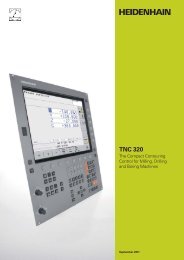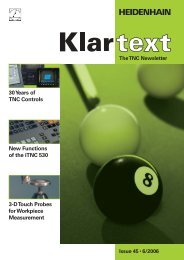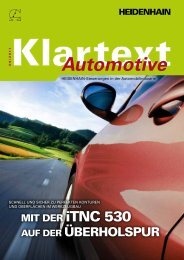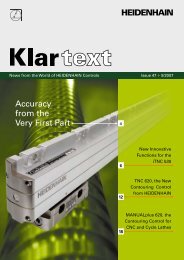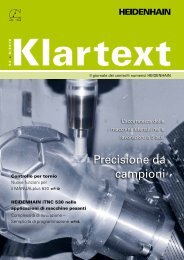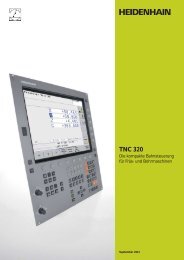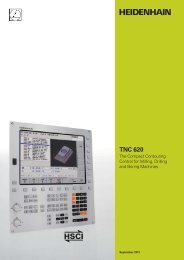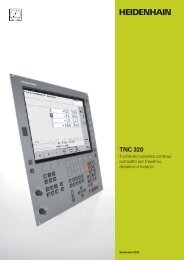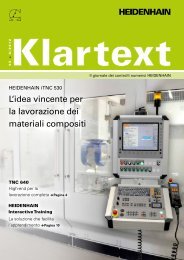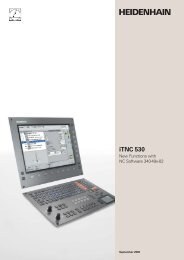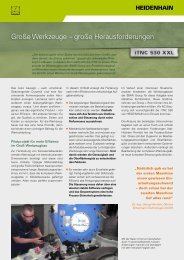iTNC 530 - TNC 640 - DR. JOHANNES HEIDENHAIN GmbH
iTNC 530 - TNC 640 - DR. JOHANNES HEIDENHAIN GmbH
iTNC 530 - TNC 640 - DR. JOHANNES HEIDENHAIN GmbH
Create successful ePaper yourself
Turn your PDF publications into a flip-book with our unique Google optimized e-Paper software.
Intelligent Machining<br />
– Dynamic Collision Monitoring Option (DCM)<br />
The complex motions and high traversing<br />
speeds of fi ve-axis machining make axis<br />
movements diffi cult to foresee. This makes<br />
collision monitoring a valuable function that<br />
relieves the machine operator and protects<br />
the machine from damage.<br />
NC programs from CAM systems may<br />
avoid collisions of the tool or tool holder<br />
with the workpiece, but unless you invest<br />
in expensive offl ine machine simulation<br />
software, they ignore the machine<br />
components located within the work<br />
envelope. And even then it cannot be<br />
guaranteed that machine conditions, such<br />
16<br />
as the fi xture position, will be identical to<br />
those of the simulation. In the worst case,<br />
a collision will remain undetected until the<br />
damage is done.<br />
In cases such as these, the machine<br />
operator is supported by the dynamic<br />
collision monitoring (DCM)* feature of<br />
the <strong>i<strong>TNC</strong></strong> <strong>530</strong>. The control interrupts<br />
machining whenever a collision is<br />
imminent, thereby increasing the safety for<br />
the machine and its operator. This helps to<br />
prevent machine damage, which can result<br />
in costly downtimes. Unattended shifts<br />
become safer and more reliable.<br />
However, DCM works not only in<br />
automatic mode. It is also active in<br />
manual operation. If, for example, during<br />
setup the machine operator takes a<br />
collision course to a component or fi xture<br />
in the working space, the <strong>i<strong>TNC</strong></strong> <strong>530</strong> detects<br />
it, stops axis movement, and issues an<br />
error message.<br />
Before actually machining a part, you can<br />
also check for collisions in the Test Run<br />
mode, with a real datum and real tools.<br />
* The machine and the <strong>i<strong>TNC</strong></strong> must be adapted to these<br />
functions by the machine tool builder.



